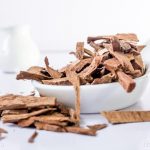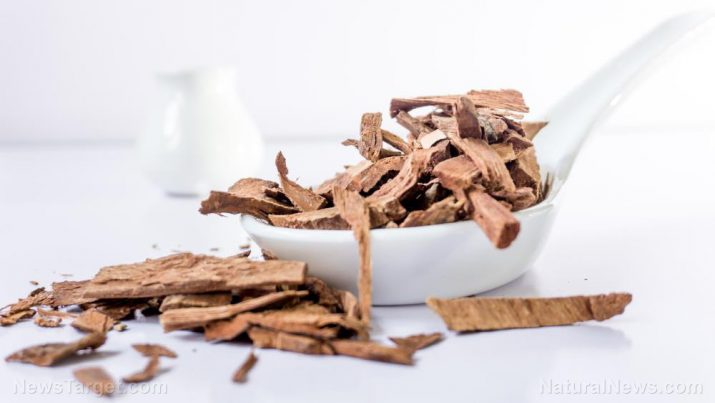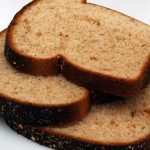
Arjun tree, long used in ethnomedicine, can also be used as a natural preservative
Thursday, April 11, 2019 by Janine Acero
http://www.naturalnewsingredients.com/2019-04-11-arjun-tree-can-be-used-as-natural-preservative.html

Researchers from India and New Zealand explored the potential of Terminalia arjuna as a novel natural preservative in meat products. Their findings were published in the journal Food Science and Human Wellness.
The researchers used chevon sausages as a model system. They incorporated different levels of T. arjuna extracts: T1 (0.25 percent), T2 (0.50 percent) and T3 (0.75 percent). They assessed various lipid oxidative stability and storage quality parameters under refrigerated conditions (4 ± 1 C).
The researchers observed a significant effect on lipid oxidative stability (p < 0.05). The T. arjuna-treated products exhibited significantly lower values for thiobarbituric acid reacting substances (TBARS) (mg malondialdehyde/kg) in comparison to control.
Furthermore, the T. arjuna-treated products showed significantly lower values for total plate count, psychrophilic count, yeast and mold count, and free fatty acid (FFA) values.
The T. arjuna-treated products also showed significantly higher scores for various sensory parameters during refrigerated storage.
The results showed that T. arjuna successfully improved the lipid oxidative stability and storage quality of the meat models. These findings suggest that T. arjuna extract may be commercially exploited as a novel preservative in meat products.
Natural ways to preserve food
Synthetic food preservatives sure can do the job, but there are a lot of natural ways to extend the shelf life of your food. Here are some of them.
- Salt (curing or brining) — Salt has been used as a natural preservative since ancient times. It is primarily used for fish and meat, but can also be used to preserve vegetables and even desserts. Sodium chloride removes moisture, creating an environment where bacteria cannot thrive. Salt can keep foods fresh for several months, even years. Choose unrefined salt such as Himalayan rock salt, Celtic sea salt, or Maldon sea salt.
- Lemon juice — The abundant amounts of ascorbic acid (vitamin C) in lemon juice prevents spoilage and rotting. Just like salt, lemon juice dehydrates the food and balances its pH factor and natural acids. Citric acid in lemons is used in food, beverages, cosmetics and pharmaceuticals to preserve color and flavor. Lemon juice also prevents browning in fruits like apples and avocados.
- Pickling — This is a common method of preserving food. By letting it sit in vinegar for a period of time, the acetic acid in vinegar effectively gets rid of microbes and prevents spoilage. Traditional pickling solutions consist of vinegar, water, salt and sugar. You can choose to do away with sugar as it is mostly intended to add flavor to the food you are pickling.
- Fermentation — Another classic example of a food preservation method, fermentation can extend the life of your fruits and vegetables for months. Lacto-fermentation uses water and salt, which halt the growth of bad bacteria and allow good bacteria to thrive. The latter breaks down the sugar in fruits and vegetables, which produces lactic acid. The lactic acid then provides the perfect level of acidity to protect the food from mold and bacteria. Popular fermented foods include sauerkraut, kimchi and kombucha.
- Honey — Honey is an excellent food preserver. Have you noticed that pure, raw honey never spoils? Like salt, honey sucks moisture from food and prevents bacterial growth. (Related: Coconut oil is a versatile and natural antioxidant that can be used in food preservation.)
- Garlic — This powerful superfood has potent antibacterial properties that make it effective in preventing spoilage and rotting. Bolster the abilities of other food preservation methods such as brining and pickling by adding garlic. It also helps keep the freshness of animal- and plant-based protein dishes.
Visit Ingredients.news for more studies and stories on other potential natural food preservatives.
Sources include:





